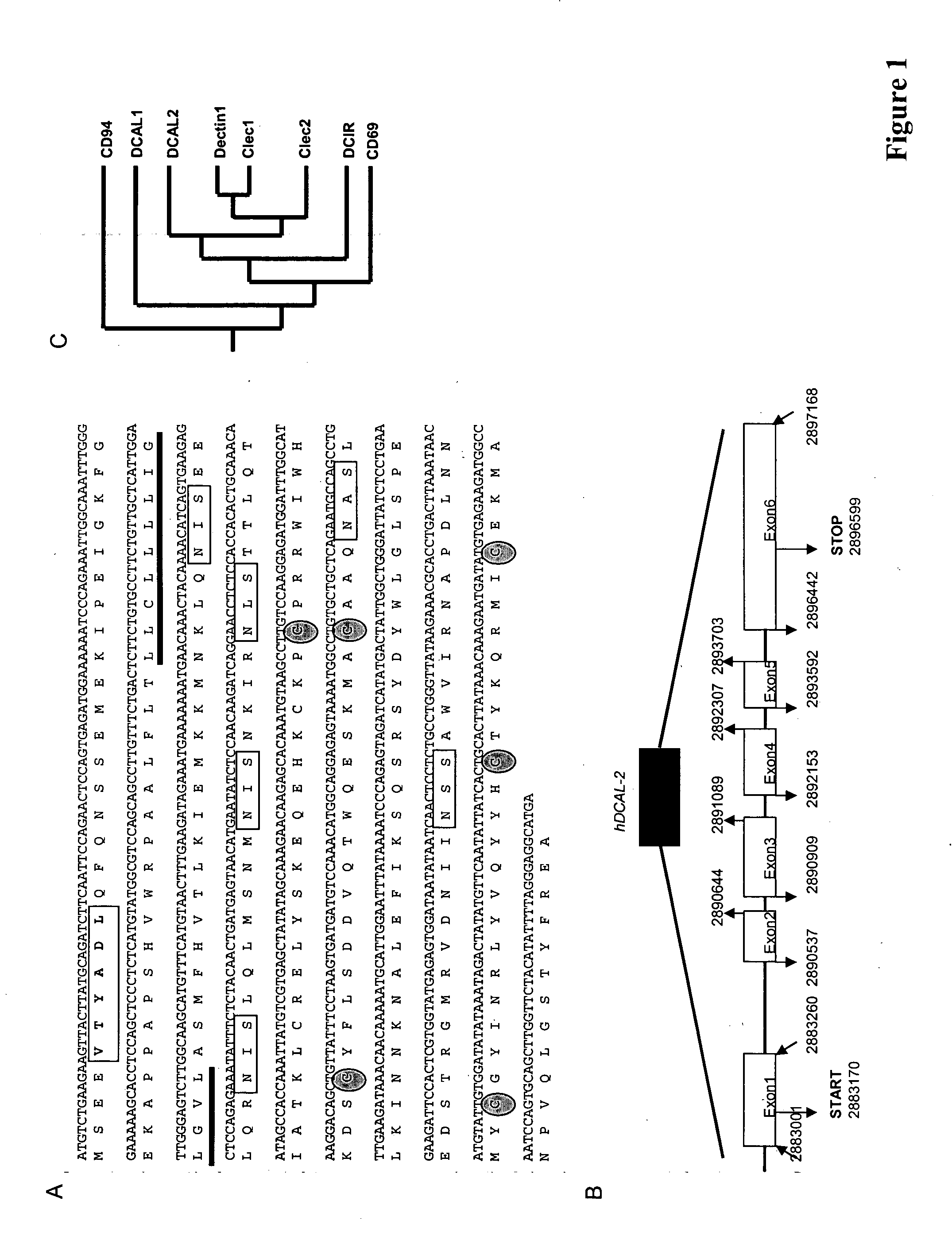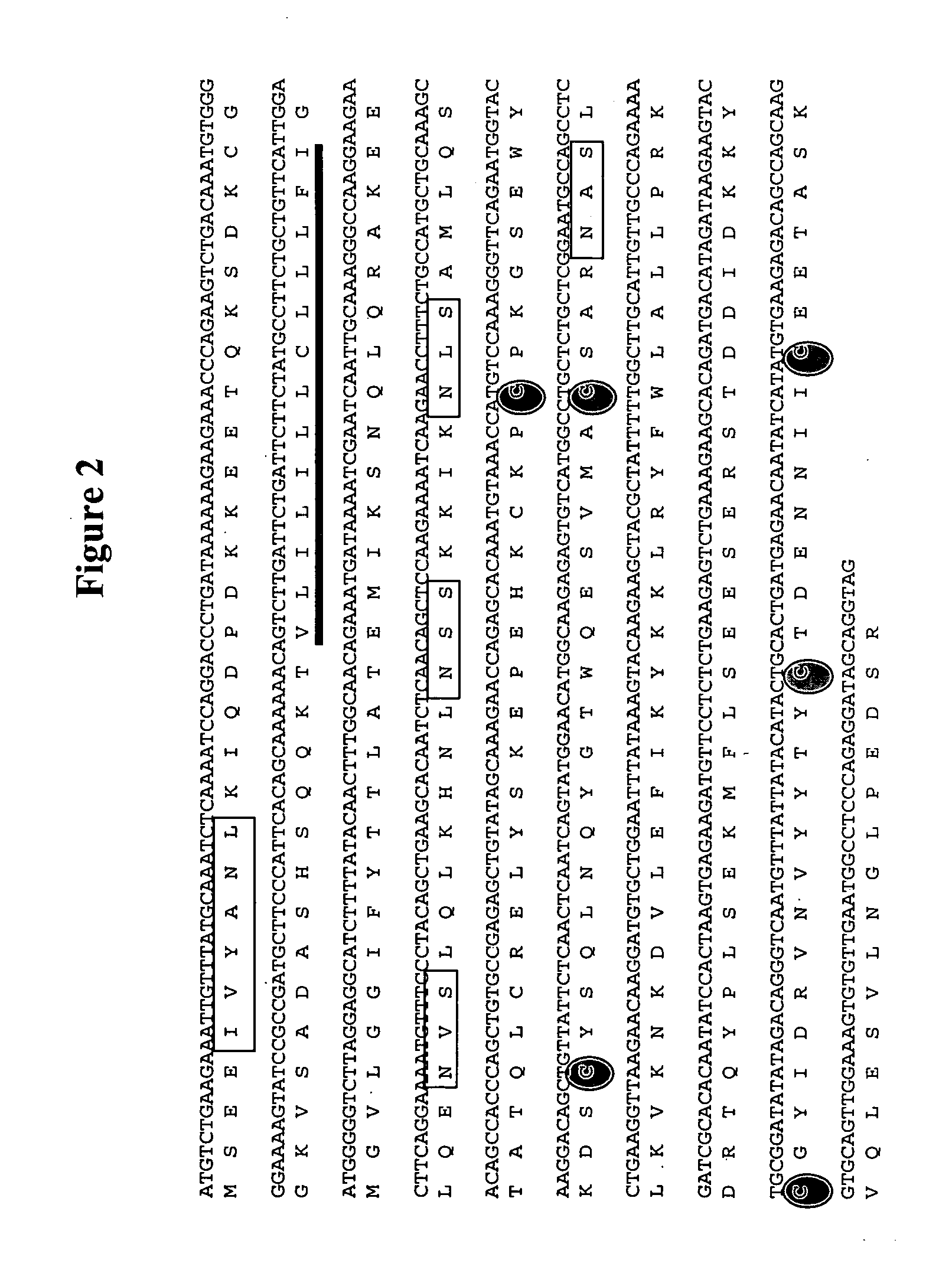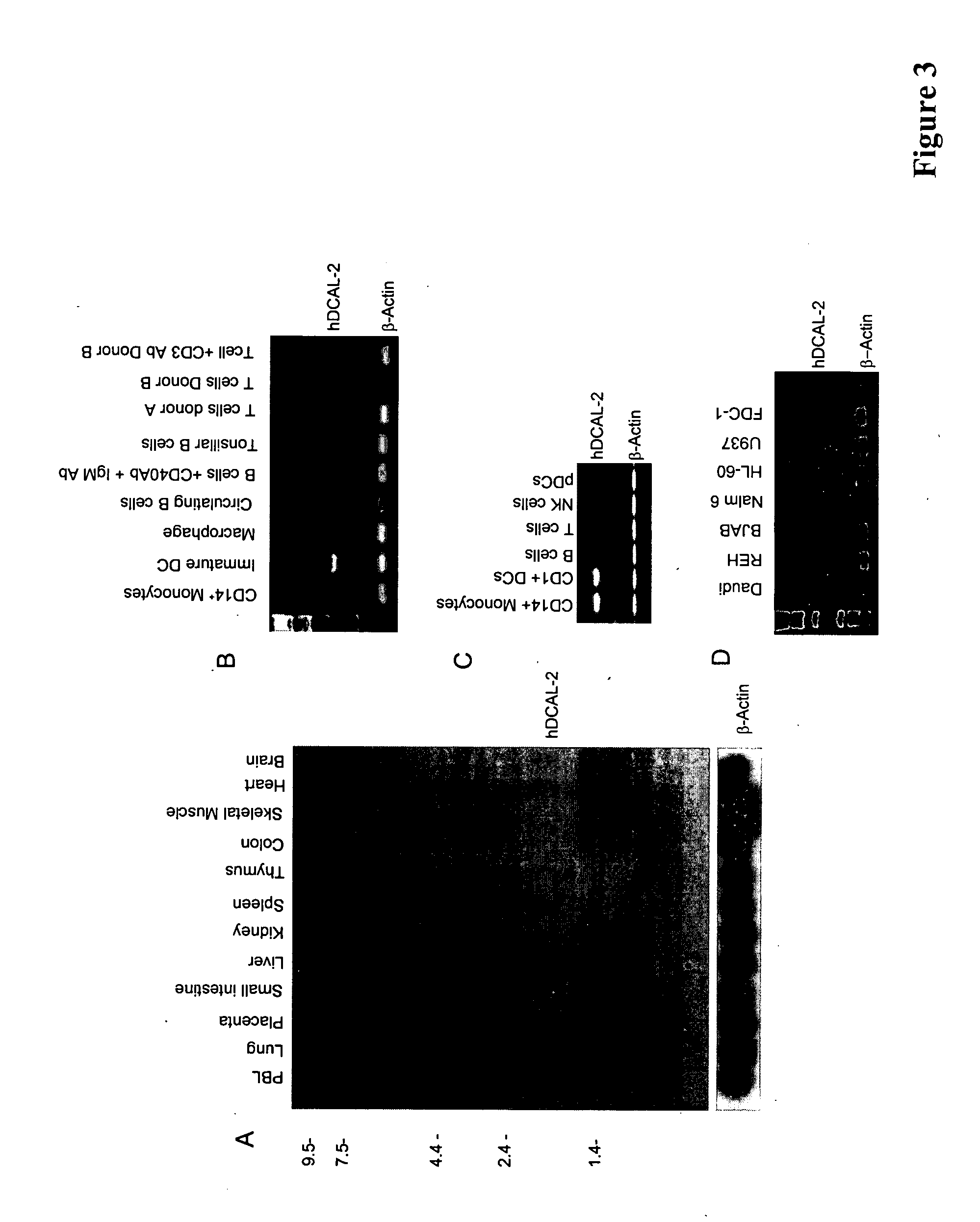Regulation of dendritic cell functions by the DCAL-2 receptor
a dendritic cell and receptor technology, applied in the field of dendritic cell function regulation by the dcal2 receptor, can solve the problems of no teaching or suggestion in the art, -2 is involved in dendritic cell function, etc., to enhance the immune response, enhance the response to antigens, and enhance the immune response.
- Summary
- Abstract
- Description
- Claims
- Application Information
AI Technical Summary
Benefits of technology
Problems solved by technology
Method used
Image
Examples
examples
Materials and Methods
Primary Cell Culture and Cell Lines
[0124] CD14+ monocytes were isolated from leukopheresis products of healthy donors (Fred Hutchinson Cancer Research Center, WA) by positive magnetic selection as described by the manufacturer (Miltenyi Biotech, Auburn, Calif.). These CD14+ cells were then differentiated in culture for 5-7 days into monocyte-derived immature DCs (iDCs) using IL-4 (30 ng / ml) (Research Diagnostics Inc., Flanders, N.J.) and GM-CSF (100 ng / ml) (Amgen, Seattle, Wash.). To induce maturation, iDCs were stimulated with various doses of E. coli LPS (Sigma-Aldrich Corp, St Louis, Mo.), Yeast Zymosan (Sigma-Aldrich Corp, St Louis, Mo.), CD40L transfected L cells for 24 h or 48 h. The phenotype of the DCs before and after stimulation was established by flow cytometry using a FACScan analyzer (Becton Dickinson). Immature DC were defined as CD14− CD1ahigh CD80+ CD86+ and mature DCs were defined as CD14− CD1ahigh CD80high CD86high CD83+HLA-DR++. CD1a+ and B...
PUM
| Property | Measurement | Unit |
|---|---|---|
| Solubility (mass) | aaaaa | aaaaa |
| Immunogenicity | aaaaa | aaaaa |
Abstract
Description
Claims
Application Information
 Login to View More
Login to View More - R&D
- Intellectual Property
- Life Sciences
- Materials
- Tech Scout
- Unparalleled Data Quality
- Higher Quality Content
- 60% Fewer Hallucinations
Browse by: Latest US Patents, China's latest patents, Technical Efficacy Thesaurus, Application Domain, Technology Topic, Popular Technical Reports.
© 2025 PatSnap. All rights reserved.Legal|Privacy policy|Modern Slavery Act Transparency Statement|Sitemap|About US| Contact US: help@patsnap.com



